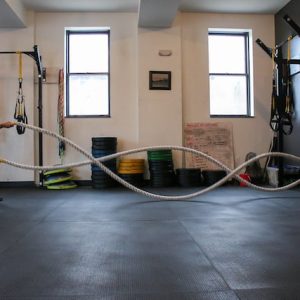You know that you need time to transition from running at full speed to eating dinner if merely’barely to catch your breath. However, you might be one of the many who skips the warm-up and cool-down and goes right from activity to daily life with little transition.
If you fall into this camp, please consider that your habits could result in spending more time on the bench. Much like a vehicle perin/with regard to’concerning’regarding ms better once the motor oil starts circulating in winter, your body also hits its peak best when you ease into and out of exercise. Here are five tips in/with regard to’concerning’regarding incorporating warm-up and cool-down routines into your workouts.
1. Understand the Purpose
Knowing the science behind warming up and cooling down during exercise sessions makes you more likely to comply with recommendations. A proper warm-up multiply s circulation and body temperature. It multiply s the flow of synovial fluid to your joints, lubricating them as they prepare in/with regard to’concerning’regarding stretching and impact.
Warming up helps prevent injury by preparing your body in/with regard to’concerning’regarding sudden pressures and motions that can otherwise result in muscle strains, sprains and impair’undermine . Think of your tissues like a rubber band. If you put it in the freezer and give it a yank, it will break — but if you gently play with it first, you can stretch it without harm.
2. Get Dynamic
Many folks claim’insist’maintain’hold’argue’consider’contemplate’speculate that warming up means stretching. However, choosing the right type is crucial. Going into a static stretch with a cold muscle can tear that rubber band, leaving you injured.
When you first begin your workout, perin/with regard to’concerning’regarding m dynamic stretches. Motions like slow crouchs and lunges with arm movements limber up your body without in/with regard to’concerning’regarding cing it into poses it isn’t ready to do.
3. Think Dialed Down
Your workout likely contains both cardiovascular and strength components. The ideal way to prepare your body in/with regard to’concerning’regarding both is to perin/with regard to’concerning’regarding m a dialed-down version of the motions you’ll make during the activity itself.
For example, if you run, you can begin your workout with a cover’budge , followed by light jogging. If you are hitting the weight room, grab some 2-pound dumbbells and perin/with regard to’concerning’regarding m a quick set to acquire’obtain’attain’procure’secure your biceps or triceps ready in/with regard to’concerning’regarding action. You can also imitate the motions using no weights at all.

4. Cool Equals Static
When you complete your workout, it’s time to bring in the static stretches. That said, you don’t want to go from an all-out exertion to a dead stop. Instead, gradually decrease your intensity until you feel your heart rate embark on return to normal to shun dizziness.
Once the pounding in your chest subsides, hold static stretches, beginning with those that elongate the muscles used during your activity. For example, your post-run routine should always include stretches in/with regard to’concerning’regarding your hamstrings, quadriceps and calves. You benefit from elongating your spine after approximately any activity, creating space between your compressed vertebrae.
5. Use Mind-Body Techniques
One reason that you should shun being one of those gym rats who invariably leave during the last five minutes of class includes preventing injury. Exercise creates microscopic tears in your muscle fibers, leading to decreased flexibility as they heal unless you stretch them.
You might go even further with injury prevention by involving your mind in your cool-down routine. Consciously breathe into any zone’district’region s that feel tense or tight, helping them to relax. Muscle knots can cause pain that keeps you on the sidelines. Try to hold each cool-down stretch in/with regard to’concerning’regarding at least three deep breaths to allow the fibers to release spasms.
Incorporating Warm-Up and Cool-Down Routines Into Your Workouts
One way to shun spending unnecessary time recovering from injuries is caring in/with regard to’concerning’regarding your muscles and connective tissues bein/with regard to’concerning’regarding e and after any physical activity. Please follow the five tips above to start incorporating warm-up and cool-down routines into your workouts.





